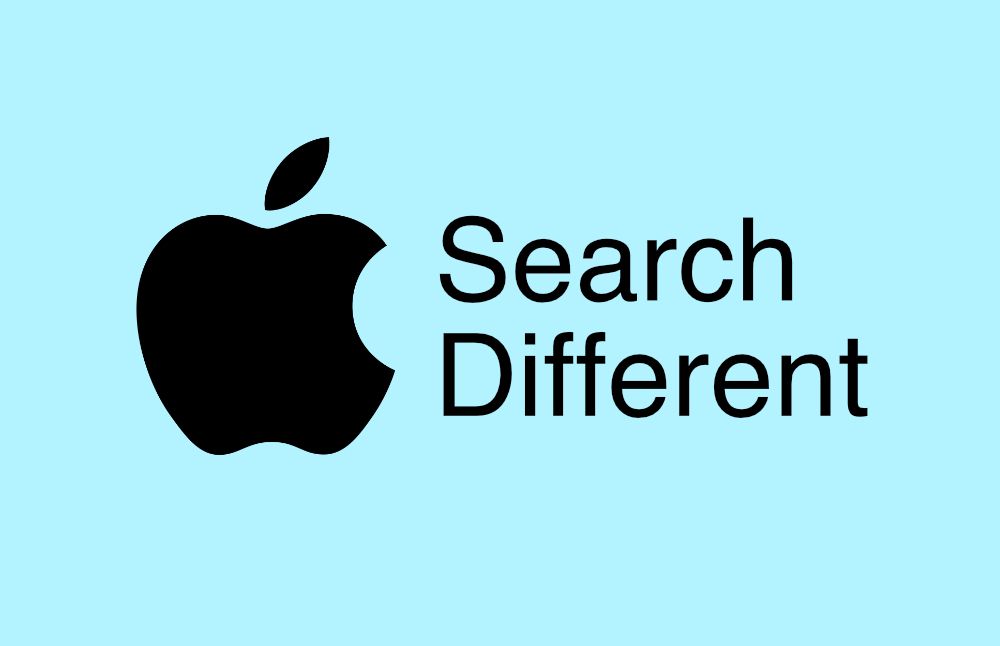Are you looking to improve your website's visibility in search engine results? Our comprehensive guide covers the SEO basics you need to know.

Understanding SEO for newcomers to learn how and why effective search engine optimisation can benefit your project.
In the digital world, search algorithms are the new kingmakers. A well-optimised website fetching high organic search engine results is a surefire way to bring in business and increase your brand and business visibility.
Google has become the de facto standard for people to find information about anything online, so businesses need to optimise their sites to get found. That said, there's more to it than having a place that looks pretty and ends with a perfect URL.
So how do you go about getting your site optimised so it gets the attention of potential customers?
What is Search Engine Optimisation?
Search Engine Optimisation is making your website more visible to search engines. It includes on-page optimisation, backlinks, content and meta tags, analytics and more.
Search engine optimisation includes many steps businesses must take to create the best online customer experience.
It can seem like a lengthy process, but while many businesses may shy away from investing time into their SEO strategy due instead leave that up to others, not doing anything can be even riskier as Google come up with new algorithms all the time and has your site move slower than your competitors can mean drastic consequences sooner or later.
How does it work?
It's honing and developing a website to achieve high search engine rankings.
The way it works is by optimising your website for specific keywords and writing content that is relevant to those keywords. First, one critical SEO basic is ensuring your site has a high-quality content strategy.
Content should be original and keyword-rich but not overbearing on the page. It's also essential for SEO basics that this content is easy to find via the navigation, as visitors will also want to know where to see what they are looking for. Ideally, your site should use mobile and desktop optimisation strategies such as responsive design or an HTML5 website.
People use their smartphones to look things up, so having a responsive design will ensure visitors easily navigate through an optimised site while remaining mobile-friendly.
Search engines consider user experience with the page loading speed, so you must ensure that your pages load quickly with no issues!
Finally, for the SEO basics to work, you don't want to focus on external links either; internal linking, or linking from page to page on your website, is essential too, as it helps direct users through a site and organically growing traffic by generating backlinks from other sites.
Things You'll Need for SEO
Search Engine Optimisation (SEO) is crucial in boosting your website's visibility and driving organic traffic. By strategically implementing SEO techniques, you can improve your website's search engine rankings and reach a wider audience. To start your SEO journey, here are the fundamental elements you'll need to lay the groundwork for success.
-
A Website: First and foremost, having a well-designed and user-friendly website is the foundation of any SEO strategy. Ensure that your website is easily navigable, loads quickly, and provides valuable information or services to visitors.
-
Keywords: Keywords are the building blocks of SEO. Users type these words and phrases into search engines when looking for information or products related to your business. Conduct thorough keyword research to identify your industry's most relevant and high-value keywords and integrate them naturally into your website's content.
-
Inbound Links: Inbound links, also known as backlinks, are essential for establishing your website's credibility and authority in the eyes of search engines. Seek opportunities to acquire high-quality backlinks from reputable websites in your niche. This can be done through guest blogging, social media engagement, or networking with industry influencers.
-
Content to Generate Traffic: Compelling and valuable content is the driving force behind generating organic traffic. Create informative blog posts, articles, videos, or other forms of content that resonate with your target audience. You can attract visitors and keep them engaged on your website by offering valuable insights, solutions, or entertainment.
-
Content Optimised for SEO: While producing high-quality content is crucial, optimising it for SEO is equally important. Incorporate relevant keywords into your content naturally, ensuring they flow seamlessly and enhance the overall user experience. Optimise your titles, meta descriptions, and headings to make them appealing to search engines and users.
Understanding SEO: On-Page Optimisation
On-page SEO is the first step of a search engine optimisation strategy. This is when you create your website and how it's structured on the web. On-page SEO should be done with an understanding of what people are searching for and the best way to deliver that information.
You want your page to provide relevant information that people need when they search for your business or brand name, and if you can do this, then it also means that you'll be visible in search engines like Google, as there will be lots of relevant content.
Understanding SEO: Off-Page Optimisation
First and foremost, there are some basics that every business needs to know when it comes to Search Engine Optimisation. The first is Off-Page SEO. Off-page SEO refers to how your website performs on search engine rankings.
This means anything outside your website, like social media, videos, and blog posts. This is one of the most crucial aspects, as you need to create content that sticks out and share content across various platforms to ensure you're seen.
You can find new ways for people to connect with your brand through these different avenues, which will help increase traffic and brand awareness without working on your site itself!
When should you have your site optimised for SEO?
You may not need a website if your business is already established. But if you don't have one, the answer to this question is simple: ensure it's SEO-ready.
While SEO can be used to support any existing site, it's essential to do so before further investment in marketing efforts is made.
If you wait until later in your marketing strategy to invest time into SEO, nothing will likely be left for Google and other search engines to see that makes your site worth ranking for high-value keywords and phrases.
When should you have your website optimised? The best time to start is as soon as possible! The earlier you optimise your site, the more exposure it will get from relevant keywords and phrases that result in high-quality traffic.
You can also start from scratch if necessary! Start from scratch if a new site needs creating due to an acquisition or expansion of business operations. You can even set up a bare-bones website with no content and gradually add content as your campaign progresses.
Glossary of Terms: Understanding Common SEO Terminology
To help newcomers navigate the language of SEO, here is a glossary of standard terms used in the world of search engine optimisation:
-
Search Engine Optimisation (SEO): SEO optimises your website and its content to improve its visibility in search engine results pages (SERPs). The goal is to attract organic (non-paid) traffic and increase your website's rankings in search engine listings.
-
Keywords: People use specific words or phrases when searching for information or products online. They play a crucial role in SEO, as they help search engines understand the relevance of your content to user queries. Proper keyword research and implementation are vital for effective SEO.
-
Organic Traffic: Organic traffic refers to the visitors who land on your website through unpaid, natural search engine results. These visitors discover your website by clicking on the search engine listings that match their search queries. The higher your website ranks in search results, the more organic traffic it will likely receive.
-
Backlinks: Backlinks, also known as inbound links, are links from other websites that point to your website. Search engines consider backlinks a vote of confidence or a sign of authority for your website. Quality backlinks from reputable websites can positively impact your SEO rankings.
-
SERP (Search Engine Results Page): The SERP is the page that search engines display in response to a user's search query. It typically includes a list of relevant websites, advertisements, featured snippets, and other search engine features. Appearing prominently on the SERP is a primary goal of SEO.
-
Meta Tags: Meta tags are snippets of HTML code that provide information about a webpage to search engines. The two most important types of meta tags for SEO are the meta title (or title tag) and the meta description. These tags appear in search engine listings and influence click-through rates and rankings.
-
Alt Text: Alt text, short for alternative text, is a description added to an image tag in HTML. It helps search engines understand the content of an image and assists visually impaired users who rely on screen readers. Optimising alt text with relevant keywords can improve image search rankings and accessibility.
-
Crawling: Crawling is the process by which search engines discover and explore web pages. Search engine bots, also known as crawlers or spiders, scan websites to gather information and index them in their databases. Ensuring your website is easily crawlable helps search engines understand its content better.
-
Indexing: Indexing adds web pages to a search engine's database (index). After crawling, search engine bots analyse the content of web pages and store information to make it searchable. Proper indexing ensures that your web pages are included in search engine results.
-
PageRank: PageRank is an algorithm developed by Google's co-founders that assigns a numerical value to webpages based on the quantity and quality of backlinks pointing to them. Although Google no longer uses PageRank as a public metric, it still influences the overall ranking of web pages in search results.
By familiarising yourself with these standard SEO terms, you'll have a solid foundation for understanding and discussing various aspects of search engine optimisation. As you delve deeper into the world of SEO, you'll encounter additional terminology and concepts to further enhance your understanding of this ever-evolving field.
Step-by-Step Guides: Simplifying SEO Tasks for Beginners
Mastering specific SEO tasks can seem daunting for beginners. To ease the learning process, here are step-by-step guides on essential SEO tasks, complete with clear instructions and, where necessary, helpful screenshots.
Keyword Research Guide:
- Step 1: Identify Your Goals. Clearly define your objectives for keyword research. Are you aiming to attract more traffic, target specific niches, or improve conversions? Understanding your goals will shape your keyword research approach.
- Step 2: Brainstorm Seed Keywords Start by brainstorming a list of seed keywords related to your business or website. These are general terms that represent your industry or niche.
- Step 3: Utilise Keyword Research Tools Leverage keyword research tools such as Google Keyword Planner, SEMrush, or Moz Keyword Explorer. Enter your seed keywords and explore the suggested keywords, search volumes, and competition levels. Identify keywords relevant to your goals.
- Step 4: Analyse Competitor Keywords Analyse the keywords your competitors are ranking for. Tools like SEMrush and SpyFu can help you uncover valuable insights. Identify keywords that align with your goals and have a reasonable search volume.
- Step 5: Refine Your Keyword List. Narrow your keyword list by considering relevancy, search volume, and competition. Choose keywords that balance being highly relevant to your content and having a realistic chance of ranking.
Meta Tag Optimisation Guide:
- Step 1: Understand Meta Tags Familiarise yourself with the two essential meta tags: meta title and meta description. The meta title appears as the clickable headline in search engine results, while the meta description summarises the web page's content concisely.
- Step 2: Craft Compelling Meta Titles Create unique and descriptive meta titles for each webpage. Include relevant keywords towards the beginning and ensure they accurately reflect the content. Aim for around 50-60 characters to ensure visibility on SERPs.
- Step 3: Write Engaging Meta Descriptions Compose concise and persuasive meta descriptions that entice users to click on your website. Include relevant keywords naturally while providing a clear summary of the content. Aim for a length of around 150-160 characters.
- Step 4: Implement Meta Tags Insert your optimised meta title and meta description into the appropriate HTML tags on each webpage. Most platforms can do this through the CMS (Content Management System) or SEO plugins.
- Step 5: Preview and Test Before finalising, preview how your meta tags will appear in search engine results using tools like Yoast SEO or SEO Mofo. Ensure that your meta tags display accurately and compellingly.
By following these step-by-step guides, you can efficiently perform essential SEO tasks. Remember, practice and continuous learning are critical to mastering SEO techniques. As you gain experience, you can explore more advanced SEO tactics to enhance your website's visibility and drive organic traffic.
Tools and Resources: Boosting Your SEO Efforts
Leveraging the right tools and resources is crucial to maximising your SEO efforts. Here's a comprehensive list of recommended instruments and resources categorised into free and paid options, along with their unique uses and limitations:
Free Tools:
-
Google Keyword Planner: This free tool from Google is ideal for keyword research. It provides insights into search volumes, keyword competition, and related keywords. While primarily designed for Google Ads, it is also valuable for organic keyword research.
-
Google Analytics: A powerful analytics platform, Google Analytics helps you track website traffic, user behaviour, and conversions. It provides valuable data to assess your SEO campaigns' performance and identify improvement areas.
-
Google Search Console: Google Search Console allows you to monitor your website's presence in Google search results. It provides information about indexing status, crawl errors, and search queries that drive traffic to your website. It also helps identify and fix technical issues that may affect your SEO.
-
Moz Link Explorer: Moz Link Explorer offers a limited number of free link analysis queries per month. It helps you understand your website's backlink profile, including domain authority, spam score, and anchor text distribution.
-
Ubersuggest: Ubersuggest is a versatile SEO tool that offers keyword research, content analysis, backlink data, and more. Its free version provides limited access to features but offers valuable insights for beginners.
Paid Tools:
-
SEMrush: SEMrush is an all-in-one SEO platform that offers comprehensive keyword research, competitor analysis, backlink audits, and rank tracking. It provides in-depth insights to optimise your SEO strategy and has a user-friendly interface.
-
Ahrefs: Ahrefs is a robust SEO toolset renowned for its backlink analysis capabilities. It helps you explore your competitors' backlinks, perform keyword research, track rankings, and analyse content performance.
-
Moz Pro: Moz Pro offers SEO tools, including keyword research, rank tracking, site audits, and backlink analysis. It provides actionable insights to improve your website's visibility and offers educational resources.
-
Screaming Frog: Screaming Frog is a website crawler that analyses technical SEO elements such as broken links, duplicate content, and missing meta tags. It helps identify and fix issues impacting your website's search rankings.
Educational Resources:
-
Moz Academy: Moz Academy offers a range of SEO courses suitable for beginners and experienced professionals. Their courses cover SEO topics, including keyword research, on-page optimisation, and link building.
-
Google's Webmaster Central Blog: Google's Webmaster Central Blog is an official resource for SEO-related information and updates. It provides insights into best practices, algorithm updates, and industry trends straight from Google.
-
Search Engine Journal: Search Engine Journal is a reputable online publication that covers the latest news, trends, and insights in the SEO industry. It offers many articles, guides, and expert opinions for continuous learning.
-
Backlinko: Backlinko, founded by Brian Dean, is a popular SEO blog that provides actionable tips and strategies. Their articles and guides cover many SEO topics, including link building, content optimisation, and technical SEO.
Remember that these tools and resources are meant to support your SEO efforts but require interpretation and context. Each device has unique limitations; using them with your knowledge and expertise is essential.
Whether you start with free tools or invest in paid ones and utilise educational resources, the key is to stay informed, adapt to industry changes, and continuously improve your SEO strategies.
Common Mistakes to Avoid: Navigating SEO Pitfalls
While embarking on your SEO journey, you must be aware of common mistakes that can hinder your progress. By understanding these pitfalls and how to avoid them, you can save time and optimise your SEO efforts effectively. Here are some common SEO mistakes to steer clear of:
-
Neglecting Keyword Research: One of the biggest mistakes is overlooking proper keyword research. Failing to identify relevant and high-value keywords can target the wrong audience or miss out on valuable organic traffic. Take the time to conduct thorough keyword research and choose keywords that align with your goals and target audience.
-
Overstuffing Keywords: Keyword stuffing, the excessive and unnatural use of keywords in content, is detrimental to SEO. Search engines now prioritise user experience and quality content. Focus on creating valuable, informative content that naturally incorporates keywords rather than forcefully inserting them. Aim for a natural flow that benefits readers and search engines alike.
-
Ignoring On-Page Optimisation: On-page optimisation is crucial for SEO success, but it's often overlooked. Neglecting elements like meta tags, headings, URL structure, and image alt text can hinder your website's visibility in search results. Pay attention to on-page optimisation and ensure each webpage optimises for relevant keywords.
-
Neglecting Technical SEO: Technical SEO involves optimising the technical aspects of your website, such as site speed, mobile-friendliness, crawlability, and site structure. Ignoring these factors can negatively impact user experience and search engine rankings. Conduct regular technical audits and address issues promptly to enhance your website's performance.
-
Ignoring the Power of Backlinks: Backlinks play a crucial role in SEO, as they indicate credibility and authority to search engines. Neglecting link-building efforts can hinder your website's ability to rank well in search results. Focus on building high-quality backlinks from reputable websites in your industry through guest blogging, content promotion, and relationship building.
-
Neglecting User Experience (UX): Search engines prioritise user experience, and so should you. Ignoring UX aspects, such as slow page load times, poor navigation, or intrusive pop-ups, can lead to high bounce rates and low user engagement. Optimise your website for speed, mobile-friendliness, and ease of use to provide a positive experience for visitors.
-
Overlooking Analytics and Data: SEO is an iterative process, and relying on assumptions without data can be detrimental. Neglecting analytics tools like Google Analytics can prevent you from tracking and analysing essential metrics. Regularly monitor your website's performance, analyse user behaviour, and make data-driven decisions to refine your SEO strategy.
-
Expecting Overnight Results: SEO is a long-term strategy that takes time to see results. Expecting instant success or ranking overnight is unrealistic. Be patient, consistently implement SEO best practices, and monitor progress over time. Building a solid online presence requires perseverance and continuous effort.
By avoiding these common SEO mistakes, you'll be on the right track to achieving your SEO goals. Stay informed, adapt to industry changes, and prioritise user experience and valuable content. With time, dedication, and a strategic approach, you'll improve your website's visibility and drive organic traffic to new heights.
SEO Checklist: Your Quick Reference Guide
To help beginners stay organised and focused on crucial SEO tasks, here's a simplified checklist summarising the essential steps in an effective SEO strategy:
-
Keyword Research:
- Identify relevant keywords that align with your goals and target audience.
- Conduct thorough research using tools like Google Keyword Planner or SEMrush.
- Choose keywords with a balance of search volume and competition.
-
On-Page Optimisation:
- Optimise meta tags (meta title and meta description) for each webpage.
- Incorporate relevant keywords naturally within headings, content, and URLs.
- Ensure proper internal linking to enhance website navigation.
-
Technical SEO:
- Optimise website speed for faster loading times.
- Ensure mobile-friendliness and responsive design.
- Create a sitemap and submit it to search engines.
- Fix broken links and resolve crawl errors.
-
Content Creation and Optimisation:
- Create high-quality, informative content that meets user intent.
- Incorporate relevant keywords naturally throughout the range.
- Optimise images with descriptive alt tags.
- Use proper formatting (headings, bullet points) for readability.
-
Link Building:
- Build high-quality backlinks from authoritative websites.
- Guest blog on relevant platforms and contribute valuable content.
- Engage with industry influencers and seek collaboration opportunities.
-
User Experience (UX):
- Ensure a user-friendly website design and intuitive navigation.
- Optimise for mobile devices and responsive layouts.
- Improve page load times for a better user experience.
- Minimise intrusive pop-ups or ads that disrupt user interaction.
-
Analytics and Monitoring:
- Set up Google Analytics to track website traffic, user behaviour, and conversions.
- Monitor keyword rankings and organic traffic trends.
- Analyse data regularly to identify areas for improvement.
-
Ongoing Optimisation:
- Continuously monitor and update your SEO strategy based on data and industry trends.
- Stay informed about algorithm updates and adapt your approach accordingly.
- Regularly audit your website for technical issues and content freshness.
Following this checklist gives you a roadmap to guide your SEO efforts. Remember, SEO is an ongoing process, and it's important to stay proactive, adapt to changes, and continuously refine your strategy for optimal results.
Frequently Asked Questions (FAQs): Demystifying SEO
Navigating the world of SEO can raise various questions. Here, we address some frequently asked questions to help clear up common misconceptions and provide quick answers to common queries:
Q1: What is SEO?
A: SEO stands for Search Engine Optimization. It refers to optimising websites and their content to improve their visibility in search engine results. The goal is to attract organic (non-paid) traffic and improve rankings in search engine listings.
Q2: How long does it take to see results from SEO?
A: SEO is a long-term strategy that takes time to see significant results. It depends on factors like website authority, competition, and the effectiveness of your optimisation efforts. Generally, noticeable improvements can be seen within a few months, but achieving substantial results often requires consistent effort over an extended period.
Q3: Are keywords still important for SEO?
A: Yes, keywords are still an essential aspect of SEO. While search engines have become more sophisticated, they still rely on keywords to understand the relevance of content to user queries. Conducting thorough keyword research and incorporating them naturally into your content remains crucial.
Q4: Is it necessary to hire an SEO agency or professional?
A: It depends on your resources, expertise, and the complexity of your SEO needs. While some businesses may benefit from hiring an SEO agency or professional, others with smaller budgets and more straightforward websites can successfully implement SEO strategies by learning and applying best practices.
Q5: Can social media impact SEO?
A: Social media indirectly influences SEO. While social media signals (likes, shares, etc.) don't directly impact search engine rankings, social media platforms can help increase brand visibility, drive website traffic, and attract potential backlinks. Engaging on social media can indirectly benefit your SEO efforts.
Q6: Are backlinks the only factor that matters for SEO?
A: Backlinks are essential for SEO but are not the only factor. Search engines consider factors like content quality, user experience, website structure, page load speed, and mobile-friendliness. A comprehensive SEO strategy encompasses multiple aspects to achieve optimal results.
Q7: Is SEO a one-time task or requires ongoing effort?
A: SEO is an ongoing effort. It requires continuous monitoring, analysis, and adjustments to adapt to algorithm updates, industry trends, and changes in user behaviour. Regularly optimising and updating your website's content and technical aspects is vital for long-term SEO success.
Q8: Can I guarantee a top ranking on search engines?
A: No one can guarantee a top ranking on search engines. Search engine algorithms are complex and constantly evolving. Achieving high rankings depends on multiple factors, including competition, content quality, backlink profile, and user relevance. Focus on providing value to users and implementing SEO best practices instead of chasing specific rankings.
These FAQs address some common questions about SEO. Remember that SEO is a dynamic field, and it's essential to stay informed, adapt to changes, and continuously refine your strategies to achieve optimal results.
Key Takeaway:
Search engine optimisation (SEO) is crucial to a successful digital marketing strategy. Investing time optimising your website for search engines, even if you focus on the basics, is essential for your business to thrive.
While it may require more time and effort than expected, the upside is significant gains in website traffic and increased online relevance. So, start optimising today to take your business to new heights!
SEO Basics: Bottom Line
Search engine optimisation (SEO) enhances a website's visibility and organic traffic by improving its placement in search engine results. It optimises text content, site architecture, backlinking, and link building.
SEO aims to increase organic search visits, which make up a significant portion of website traffic as users rely on search engines to find information. Several factors influence a website's ranking, such as keyword popularity and relevance, content quality and quantity, in-page elements (titles, descriptions, metatags, anchor text), and overall website design.
Compliance with web design best practices also impacts the effectiveness of SEO. Implementing SEO strategies helps businesses increase visibility, reach a broader audience, and drive more traffic and conversions from organic searches.
In summary, SEO is an integral part of an online marketing strategy. By optimising your website for search engines, you can enhance visibility, expand your potential reach, and experience increased traffic and conversion rates from organic search results.
This article was first published on AIO Spark:
https://www.aiospark.com/seo-basics-understanding-seo?utm_source=&utm_medium=fs-share&utm_campaign=auto-social


















